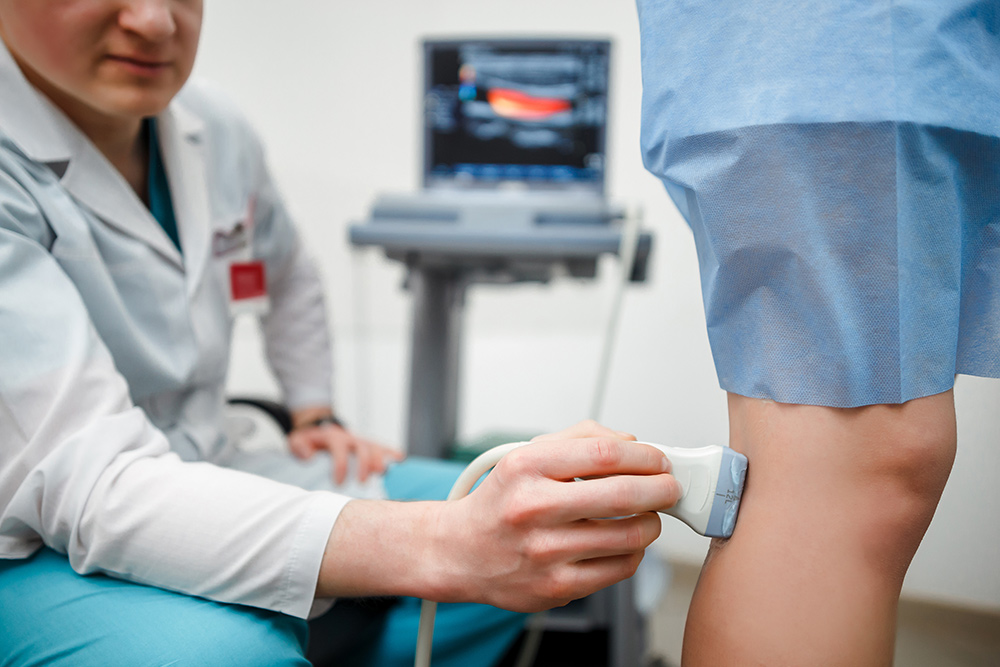Table of Contents
ToggleLast updated on February 24, 2025
Spider veins and varicose veins are two of the most common vein conditions, but they often cause confusion due to their similar appearance. Despite some overlap, these conditions have distinct differences in size, symptoms and health risks. Understanding spider veins vs varicose veins is key to recognising which condition you may have and exploring the most appropriate treatment options.
What Are Spider Veins?
Spider veins are tiny, thin blood vessels that appear red, blue, or purple near the skin’s surface. Commonly found on the legs and face, they form web-like or branch-like patterns. Spider veins typically occur due to weakened valves in the veins, which cause blood to pool. Although usually a cosmetic concern, spider veins can sometimes cause mild aching or burning.
What Are Varicose Veins?
Varicose veins are swollen, larger varicose veins that bulge out from the skin. They are usually dark blue or purple and often develop in the legs. Unlike spider veins, they result from issues in deeper veins, where blood flow is disrupted. Varicose veins may cause aching, heaviness, swelling and itching. Left untreated, they can lead to blood clots, skin changes, or ulcers.
Key Differences Between Spider Veins and Varicose Veins
Understanding the differences between spider veins and varicose veins can help you identify the condition you may be dealing with:
- Appearance: Spider veins are small, flat and thread-like, while varicose veins are large, swollen and bulging.
- Symptoms: Spider veins typically cause little to no discomfort, whereas varicose veins can result in significant pain, heaviness and swelling.
- Health Risks: Spider veins are usually a cosmetic concern, while varicose veins can lead to serious complications like blood clots or ulcers.
- Location: Spider veins are found close to the skin’s surface, while varicose veins often involve deeper veins.
When to Seek Treatment
You should seek treatment if your vein condition causes pain, discomfort, or concerns about your appearance. Spider veins are often treated for cosmetic reasons, while varicose veins may require medical intervention to address symptoms and prevent complications.
Signs you may need treatment include:
- Persistent aching or heaviness in the legs
- Swelling or cramping, especially after prolonged standing or sitting
- Skin changes, such as discolouration or thickening near the affected vein
- Visible, swollen blood vessels or bulging veins

Modern treatments for varicose and spider veins are minimally invasive and designed to restore proper blood flow efficiently.
Spider and Varicose Vein Treatment Options
Thanks to advancements in medical technology, effective and minimally invasive treatment options are available for both spider veins and varicose veins.
Spider Vein Treatment
- Sclerotherapy: A common treatment where a solution is injected into the affected vein, causing it to close and fade over time.
- Laser Therapy: This treatment uses focused light to target and collapse the veins without damaging the surrounding tissue.
Varicose Vein Treatment
- Endovenous Laser Therapy (EVLA): A popular minimally invasive procedure that uses laser energy to close off the vein.
- Radiofrequency Ablation (RFA): Similar to EVLA, this treatment uses radiofrequency energy to seal the vein.
- VenaSeal: A medical adhesive is used to close the vein and redirect blood flow to healthy veins.
- Compression Stockings: Often recommended to relieve symptoms and improve circulation.
Conclusion
Spider veins and varicose veins may appear similar, but understanding their differences is essential for choosing the right treatment options. Whether you’re dealing with thread veins near the skin’s surface or larger varicose veins involving deeper veins, early intervention can prevent complications and improve your quality of life.
If you’re concerned about your vein health, consult with a specialist to explore personalised treatment options. At Vein Doctors Sydney we offer expert care and advanced procedures to treat spider veins and severe varicose veins, helping you achieve healthier legs and improved circulation. Contact us today for more information.
How to Book an Appointment
For more information on our services or to schedule a consultation at our clinic, please contact us by either calling (02) 9023 9970, via our online form or by sending us an email.
Frequently Asked Questions
If you have any more questions about spider veins vs varicose veins, please don’t hesitate to contact us. In the meantime, our FAQs below may provide you with the additional information you’re looking for.
What causes varicose veins and spider veins?
Both varicose veins and spider veins result from weakened vein valves, which disrupt normal blood flow. This leads to blood pooling in the veins, causing them to enlarge or appear closer to the skin. Factors like genetics, prolonged standing and age contribute to their development.
What are the most common ways to treat varicose veins?
To treat varicose veins, options include wearing compression stockings to improve circulation, minimally invasive procedures such as laser therapy and treatments like radiofrequency ablation or sclerotherapy to close off the affected veins and redirect blood to healthier ones.
How do calf muscles play a role in vein health?
Calf muscles act as a pump for leg veins, helping to move blood back to the heart. Weak or inactive calf muscles can contribute to poor circulation and the development of vein issues.
Are spider veins harmful?
Unlike varicose veins, spider veins are typically harmless and considered a cosmetic concern. However, they may cause mild discomfort or indicate underlying circulation issues.
Why do small blood vessels near the skin become visible?
Visible small blood vessels, such as spider veins, often result from increased pressure, sun exposure, or hormonal changes, which weaken the walls of these tiny veins.
This information is not intended to be used for diagnosis or treatment. It is aimed at presenting a perspective only and is not a substitute for a prescription. Anyone experiencing a medical condition should consult their doctor.

